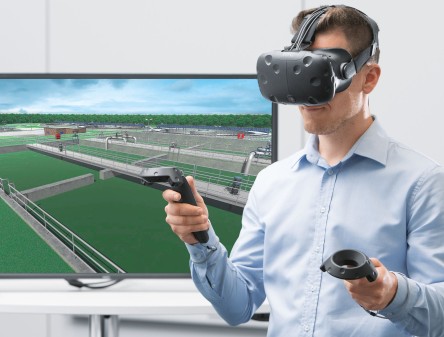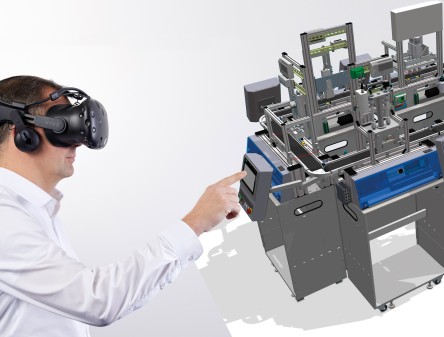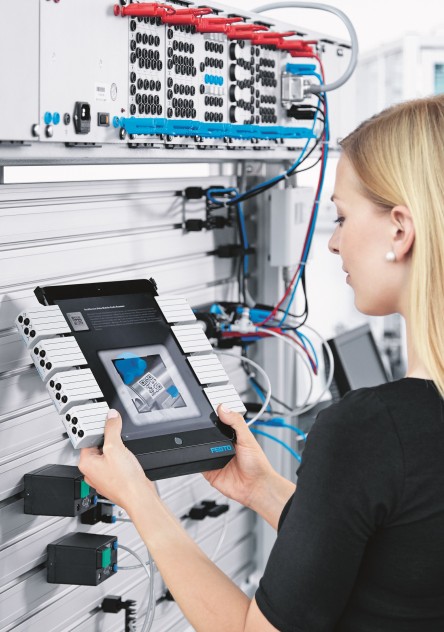
VR Simulator for Wastewater Treatment Plants
Festo Didactic and EON Reality Inc. have jointly created a virtual reality simulation that recreates typical scenarios at a wastewater treatment plant.
By using VR, you simulate situations which can normally only be set up with great effort and expense, or even situations which, in reality, would be life-threatening or hazardous for the environment or machinery.
Malfunctions and situations such as power failures, breakdowns, and accidents cannot be simulated or trained in the actual work environment. In real events like these, it’s important for qualified personnel to act quickly, safely, and correctly to avoid major damage (material/costs). The VR environment is ideal for situations that are difficult or impossible to simulate in real life – learning and acting without consequences.
Additional learning solutions in the field of environmental technology and renewable energy sources!

Virtual Reality with CIROS®
The comprehensive simulation environment, CIROS® makes it possible for you to create a virtual image of the CP training factory and its modules. Using this VR environment, students are able to move around in the 3D factory, familiarizing themselves with the environment and completing tasks in the virtual world. Because of the integrated system approach, the virtual reality application is equipped with a complete MES® interface, and therefore, an ERP connection as well (SAP4school). For location-independent learning!
CIROS® VR is available as a free, pre-installed plug-in for all CIROS® 6 licenses, as well as for CIROS® Education and CIROS® Studio. Use CIROS® to supplement existing learning systems or as a stand-alone training program for strictly virtual training.
Augmented Reality
In Augmented Reality, the user sees the real world, with additional virtual information displayed as well. A smart phone, a tablet, a head-up display (HUD), a holography system, or augmented reality goggles are required to experience and visualize the virtual level. AR technology is ideally suited for supporting students with additional information through augmented reality – enriching the real-world learning process.

The AR App from Festo Didactic
The Festo Didactic AR app supports you in starting up your mechatronic learning system. Use your tablet or smart phone to explore your learning system with augmented reality. Pay attention to special markers for individual learning system modules, where you can retrieve additional information such as data sheets, documentation, and videos of the production process. The AR app intuitively displays the layout, the control interface, and the steps required for starting up the learning system. Develop your own AR scenarios according to your requirements, and integrate them into the AR app.
Virtual Reality
Learning by doing increases learning comprehension and knowledge retention. However, the day-to-day operations in industrial factories and the associated productivity goals do not allow for intervening in processes in reality. Training in a VR environment is very realistic and provides incredible opportunities for technical education and training, for example for virtual maintenance work or realistic simulations of otherwise life-threatening situations.

Virtual Learning
Virtual education and training for real success!
Virtual learning transforms learning processes into realistic learning experiences. This deepens the understanding of technical systems. Students immerse themselves in a virtual world where they independently tackle learning projects and content, learn along with others, and actively acquire knowledge in a targeted way.
Virtual Learning and Mixed Reality – Shaping the Learning Experience:
- Exciting
- Realistic
- Effective
- Enduring